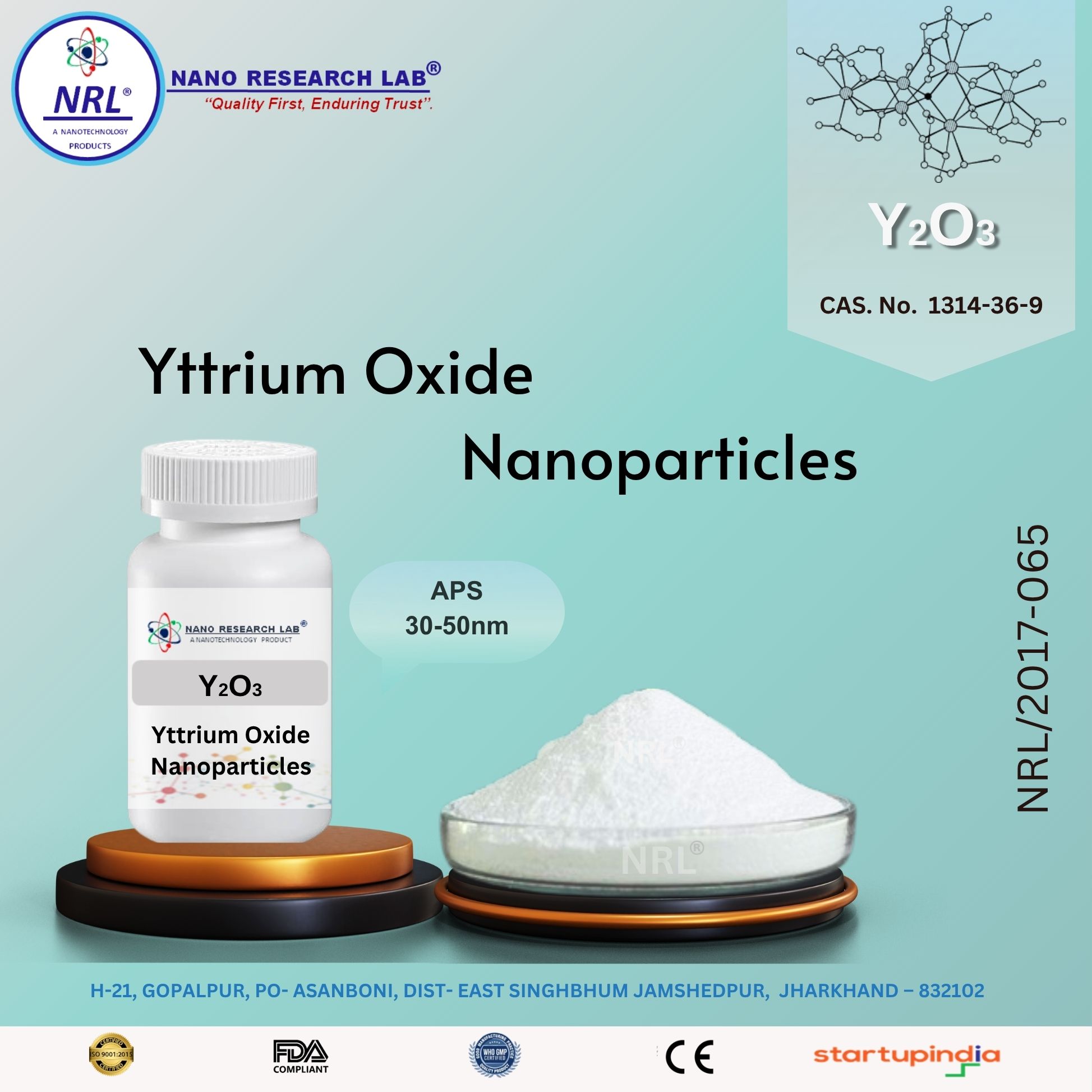
Yttrium Oxide Nanoparticles / Nanopowder (Y2O3, 30-50nm, 99.5%)
₹1475.00
Yttrium Oxide Nanopowder (Y₂O₃, 30–50 nm, Purity 99.5%)
Technical Specifications
Property | Specification |
|---|---|
Chemical Name | Yttrium Oxide (Y₂O₃) |
CAS Number | 1314-36-9 |
Molecular Weight | 225.81 g/mol |
Purity | ≥ 99.5% |
Appearance / Color | White Fine Powder |
Particle Size (Average) | 30–50 nm |
Morphology | Spherical / Agglomerated Nanoparticles |
Crystal Structure | Cubic (C-type) |
Density | 5.01 g/cm³ |
Melting Point | 2410 °C |
Boiling Point | 3600 °C |
Solubility | Insoluble in water; soluble in acids |
pH (in aqueous suspension) | ~6–8 |
Stability | Chemically stable; non-hygroscopic under normal conditions |
Key Features
High Purity (≥ 99.5%) ensures consistent chemical and physical performance.
Nanoscale Particle Size (30–50 nm): Provides high surface area and excellent reactivity.
Cubic Crystal Structure: Ensures stable and uniform structural properties.
White Fine Powder: Easy to handle, disperse, and incorporate into formulations.
Thermally Stable: Suitable for high-temperature applications.
Uniform Morphology: Promotes homogeneous dispersion in composites, ceramics, and coatings.
Applications
1. Ceramics & Refractories:
Used in advanced ceramics, optical ceramics, and high-temperature resistant materials.
2. Phosphors & Optoelectronics:
Serves as a host material for red and green phosphors in LEDs, displays, and lasers.
3. Nanocomposites & Polymers:
Enhances mechanical strength, thermal stability, and optical properties in polymer matrices.
4. Catalysts & Chemical Reagents:
Functions as a catalyst support in chemical reactions and fuel cells.
5. Electronics & Sensors:
Applied in dielectric ceramics, superconductors, and sensor devices.
6. Research & Advanced Materials:
Suitable for nanotechnology studies, thin films, and optical material research.
